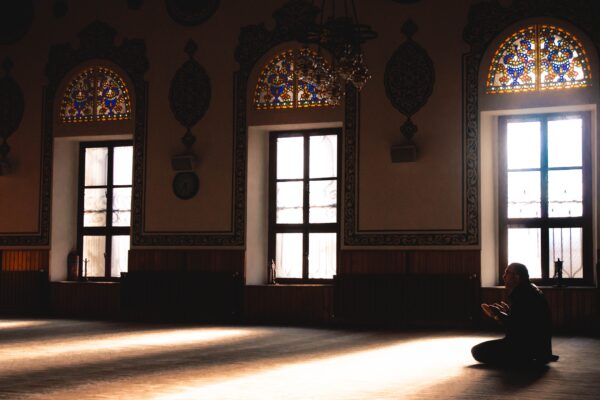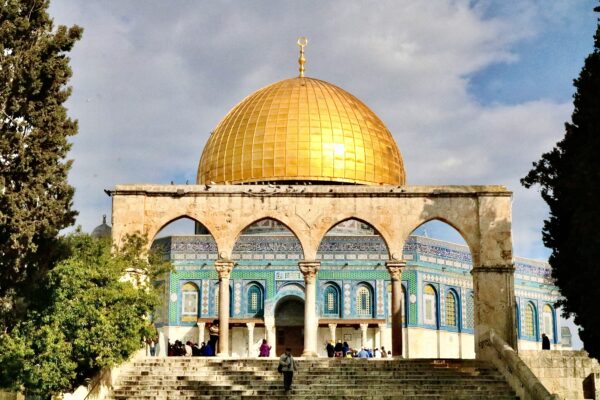What is the straight path mentioned in Surah Al-Fatiha?
What is the straight path mentioned in Surah Al-Fatiha?
Another dimension found in this chapter is the concept of requesting and asking from Allah (swt). After mentioning some of the Creator’s attributes and confessing that our sole worship belongs to Him alone, we then make a request to Allah (swt). In such an important chapter of the Qur’an, what is being asked also needs to be of great significance. Guidance (Hidaya) is that which is being asked here, as the verse says: “Guide us to the right path.” (Quran, 1:6)
Guidance is that which gives life to the human soul and lightens the path for the human being to traverse the path of spiritual growth and reach perfection. Without guidance, the path we need to follow in life is unclear and can lead to misguidance and even destruction of the individual. There are a number of points to be taken from this verse one of which is that guidance can only be provided by Allah (swt). Prophets, Imams and messengers are all means for the guidance of the human being, however, absolute guidance belongs to Allah (swt) who is Al-Hadi (The Guide), and the messengers are manifestations of this attribute of Allah (swt). The Qur’an states:
“Indeed, [O Muhammad], you do not guide whom you like, but Allah guides whom He wills…” (Quran, 28:56)
And of course, Allah (swt) chooses those who have prepared themselves and paved the path of guidance within them and thus are ready for it.
The second point is a question that is often asked; if we are reciting this chapter and believe in the Qur’an, are we not on the right path already? So what guidance do we ask for in our daily prayers? To answer this question it is essential to differentiate between the different types of guidance:
- Legislative Guidance (Al-hidayah al-tashri’iyya[1]): This type of guidance is that which has been completed and perfected through the framework of religion. The foundation of what is right and wrong, how to behave and interact with others and the environment around us have all been laid for us. In addition to this, the human being has been created with an intellect that to a great extent is able to decipher right from wrong. Thus from the perspective of the Creator out of His infinite Mercy showing His creation the right path and guiding them (Ira’a al-Tariq) has been accomplished. The divine teachings have been made accessible and shown to humanity at large as the Qur’an states it is a guide for mankind[2].
Creational Guidance (Al-hidayah al-takwiniyya[3]): This second type of guidance is that which is more important and that is to act upon the divine teachings. After the framework and belief system has reached us through the legislative guidance, then one needs to not only have the knowledge of what is right and wrong, but they have to see the reality of it and follow the teachings. In the first category the human being understands and gains knowledge of the rights and wrongs through the internal and external messengers (The intellect and divine legislation), however in this category of guidance the individual makes a movement and traverses the right path which has been shown (al-isaal ila al-Matloob). His heart is illuminated with divine light, he lives and sees the light he has been given, as the Qur’an states: “Can he who was dead, to whom We gave life, and a light whereby he can walk amongst men, be like him who is in the depths of darkness, from which he can never come out?…(Quran, 6:122).
Furthermore, we find in the following verses:
“… And whoever believes in Allah – He will guide his heart… (Quran, 64:11),
“And those who are guided – He increases them in guidance and gives them their righteousness” (47:17)
The one who already believes in Allah (swt) is given extra guidance, this type of guidance is a deep insight, and the ability to see the realities of life and not the general type of guidance which is only to be shown the path.
Given this differentiation in the types of guidance, it becomes clear that the believer is asking for the second type of guidance. It is to be given that deep insight that enables them to see the beauty of right actions and the ugliness of wrong deeds. There are different degrees of this movement and insight; therefore everyone is in need of this type of guidance. The same way light is graded, the guidance also has different levels. Thus when we say, “Guide us…” one of the meanings can be to make us steadfast on the guidance we are currently benefitting from, and also to give us a higher degree of insight and movement towards that which is good.
The guidance is towards the straight path (“Sirat al-Mustaqeem”). Sirat is a clear and wide highway[4], it is the path of balance and moderation. It is the path towards perfection and goodness; the destination of this path is Allah (swt) who is the absolute good. Thus the closer we get to Him the more perfect we will become as human beings. Sirat is always plural in the Holy Qur’an, indicating that there is only one right path which is the closest and straightest path. In this path, there can be a number of paths –Subul- (Plural of Sabeel – paths) which are within the main Sirat or they lead to the main path.
Allah (swt) has paved the path for the human being to develop, progress and move towards perfection. If one decides to deviate from this main path, he will not reach the destiny he has been created for. Allah (swt) in the Qur’an attributes the Sirat to himself as it states:
“And, [moreover], this is My path, which is straight, so follow it; and do not follow [other] ways, for you will be separated from His way… (Quran, 6:153)
And whoever is sincere and truly wants to be guided to this path, he will be shown various ways (Subul) that lead him to it. The Qur’an mentions:
And those who strive for Us – We will surely guide them to Our ways… (Quran, 29:69)
When Imam Ali (as) explained what Sirat al-Mustaqeem is, he stated that it is “a clear path, whoever does good actions in this world, he is traversing on the [right] path (Sirat) towards heaven.”[5] Furthermore, Imam Sadiq (as) in another tradition is reported to have said, “Sirat is the path of knowing Allah (swt).”[6] Indeed it is with recognising the attributes of the Creator and adapting these qualities in our lives that an individual enters the path of spiritual progression and goodness, which will lead him to paradise and eternal bliss.
In another category of traditions, the examples and instances of this straight path has been alluded to. In one narration Imam Sadiq (as) says: “Sirat al-Mustaqeem is Imam Ali (as).” [7] The divine prophets and messengers of Allah (swt) have been sent to show us the straight path, hence following them is being on the Sirat al-Mustaqeem that the tradition is referring to.
The Qur’an needs to be understood by those who embodied it themselves, i.e. the holy prophet (saw) and the infallible Imams of the Ahlulbayt (as). If it is explained by other than these individuals, then it will be prone to error and misinterpretation.
To clarify the path we are asking to be guided to, Allah (swt) further expands in the 7th verse of this chapter and categorises people into three different groups, which will be discussed in the subsequent articles. This is to show that Islam is not only a theoretical framework, rather it provides humanity with practical examples as well.
by Mohammad Ehsan Rangiha for Voice of Unity.
[1] Tasnim, v1
[2] Qur’an – 2:185
[3] Tasnim, v1
[4] Mufradat al-Raghib
[5] Bihar al-Anwar, v10, p.61
[6] Bihar al-Anwar , v89, p.20
[7] Noor al-Thaqalayn, v.1, p.21





